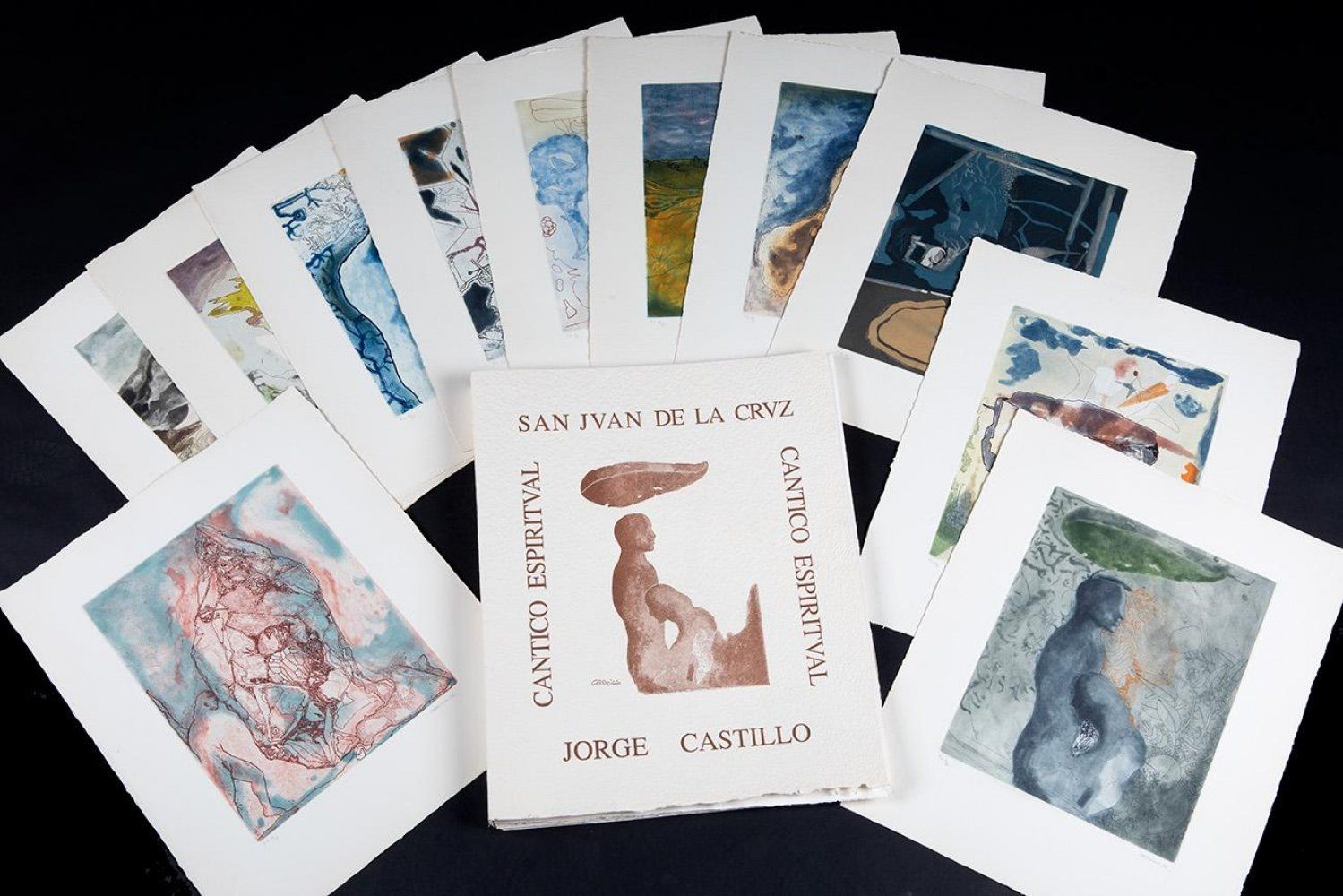Description
JORGE CASTILLO CASALDERREY (Pontevedra, 1933)._x000D_
JORGE CASTILLO CASALDERREY (Pontevedra, 1933)._x000D_ "Cántico espiritual de San Juan de la Cruz", 1992._x000D_ Copy P.A. 16/20._x000D_ 16 pauchoir lithographs, 16 etchings and 1 original puntaseca,_x000D_ All the engravings are signed and numbered by hand._x000D_ Limited edition of 175 copies. 20 of them P.A. destined to the collaborators._x000D_ Hispánica de Bibliofilia, Madrid, 1993._x000D_ Collection "Renacer Gráfico 12"._x000D_ Dry-decorated suede case._x000D_ Measurements: 70 x 56 x 7 cm._x000D_ This work reproduces the text of the Spiritual Canticle corresponding to the manuscript of Sanlúcar de Barrameda, largely conserving the spelling of the period, with slight punctuation corrections introduced by Don Víctor García de la Concha. His preliminary study, in more than 20 pages, provides us with a profound and at the same time concise work, which helps us to enjoy reading and understanding the Canticle more intensely. The texts are handwritten and printed in typescript by the Imprimerie nationale in Paris. The prologue and colophon are in Louis Gauthier script and the text of the Spiritual Canticle in Grandjean or Romain du Roi._x000D_ As a child, Jorge Castillo was passionate about drawing, and at the age of ten he made his first copy of Rubens with coloured pencils. According to Castillo, Rubens' painting taught him to understand the cubism of Braque and Picasso. He has lived in Argentina, Spain, France, Italy, Germany and the United States, and has lived in Ibiza since 2008. He grew up in Buenos Aires, where he spent long hours at the port, as well as dedicating his time to painting and writing. Around this time he began to show his paintings, even exhibiting at the Salón de Mayo. He also published poems and short stories in magazines. However, at the age of twenty-two he decided to leave his city and go to Paris. However, for economic reasons he settled in Spain, specifically in Madrid, where he spent six years between 1957 and 1963, the first three of them living as a vagabond. However, his contact with Viola and Jorge Cela, who were impressed by his drawings, changed the course of his life. During these years he gradually turned to the technique of engraving, which from then on would be one of his main means of expression. He then began to emerge as an artist, to sell his first works and to establish some important contacts, protected by Luis González Robles, who in 1960 took him to the São Paulo Biennial. There his works surprised and won praise from critics, and during those years he also exhibited in Madrid and Barcelona, as well as in San Francisco, Lisbon, Pittsburgh and Tokyo. And it was in 1964, the year of his participation in the Venice Biennale, that the doors of Paris finally opened to him, thanks to the contract he signed with the art dealer André Schoeller. He settled in the French capital for almost four years, until 1967, where he regularly visited the Louvre Museum and continued to hold increasingly successful exhibitions. In 1967 Castillo left Paris and moved to Geneva, as Schoeller had sold his contract to the Swiss Jan Krugier, then one of the most important gallery owners in Europe. However, he did not like the city, so he moved to Boissano in Italy. There he immersed himself in classical Italian art, especially that of the Trecento and Quattrocento, and in 1969 he was invited by the German government to work in Berlin, where he lived until 1975. In 1970 he exhibited at the Nationalgalerie in the German capital, the first major museum exhibition devoted to a specific period of his career, and subsequently in numerous Berlin galleries. When he left Berlin Castillo moved to Barcelona, by which time he had become a recognised painter in Europe and America. There he exhibited regularly at the Joan Prats gallery, and met Salvador Dalí. Around this time he began to visit New York and finally settled there in 1981, remaining in the city until 1992. There he was hired by the prestigious gallery
60
JORGE CASTILLO CASALDERREY (Pontevedra, 1933)._x000D_
